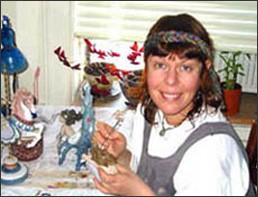Items made out of porcelain are beautiful and valuable. However, due to the fragile and delicate composition of porcelain they are prone to cracks and can break or crack easily. All is not lost, though, if you have broken or cracked your vase, as there is means to fix a broken vase. Vase repair is a pretty straightforward process that you could do yourself. A potter cannot re-fire a porcelain vase in order to make it whole again. If you were to put a freshly restored vase in a kiln, it would simply explode. The only way to invisible restore a broken ceramic ware is to use a cold restoration method.
The basic option for a non-professional is a commercial adhesive. There are various modern glues that you can use to put the broken pieces together. With careful assembly and clamping, mending of even the most delicate of objects is possible.
There are certain tools and materials that you need to have in order to attempt a mending of the damaged vase. The tools include a small mixing dish and stick, masking tape, clamping supports, pan filled with sand, rubber bands, clothespins, latex gloves, scrap wood and nails. You will also need some clear strong epoxy glue, cotton swabs, toothpicks and nail polish remover (acetone), plastic wrap, and washing powder. When mending delicate pieces quick-bonding glue is not advised as fitting the broken pieces is a time consuming job.
Before beginning the repair work a clamp to hold your porcelain vase as the epoxy cures should be prepared. Alternatively clothespins can also be utilized for this purpose. Before mixing the glue to repair the vase all pieces should be thoroughly cleaned and then dried completely. They should then be aligned without the glue, so you would have a sequence of where to start and end. Oftentimes fragments may be missing; in that case, unless you know how to sculpt, you would need to contact a professional ceramic restorer for help.
Lay the broken pieces out in order on the work surface. Use the nail polish remover or any other strong solvent to clean any break points of the pieces. Apply the adhesive to one of the broken pieces and then press both together for a minute or two. This will allow the fragments to bond and set. Use a small amount of nail polish remover to wipe away the excess adhesive that will have been squeezed out around the joints. You can also use a razor blade to remove any dried up glue that oozes out from this joint. If your porcelain vase is broken into many pieces attach them piece by piece working from the inside out. However, ensure that each joint is completely dry before repairing the next one. After applying the epoxy, the porcelain vase should be left for at least 10 minutes to achieve optimum strength before touching it again. Various objects can support the vase while the glue is drying, such as adhesive tape, Plasticine or rubber bands. Once the full porcelain vase has been dried for a few hours, missing gaps can be filled in with putty. The putty should be smoothed out over the curves of the vase.
Once the vase has been completely dried, you will then be able to paint it. Select a paint that matches the color of the vase perfectly. The paint should be painted in a way that matches the design of the vase on the whole. As with sculpting fragments, if the vase has a design or pattern that needs to be recreated, you will need to contact a professional china restorer or a painter who knows how to work with porcelain. The final step is glazing. When the glaze dries, repeat the process to give the item a smooth, shiny surface.


Speak Your Mind